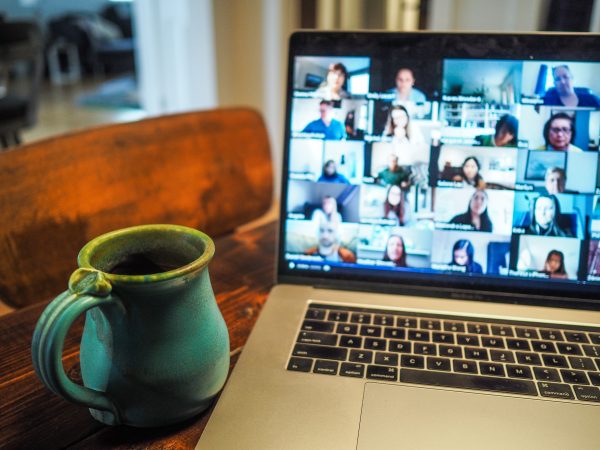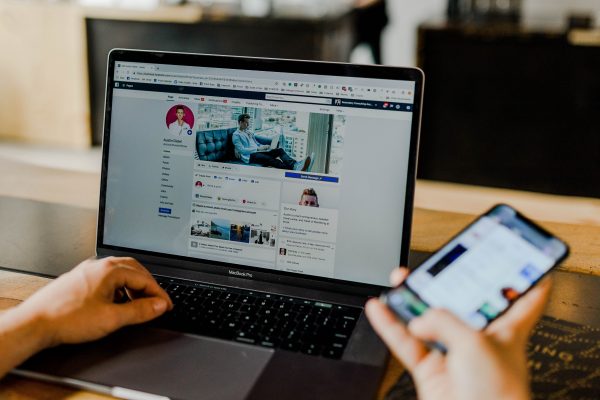How do you get more qualified leads from your digital events?
COVID-19 has wiped out the live events industry and has led to a corresponding surge in webinars and virtual events…
Digital interaction will never be as powerful as face-to-face interaction. However, with the right techniques, a digital event can still be an extremely effective, rapid marketing and lead generation tool.
Unfortunately, we’ve seen many cases where businesses simply aren’t taking advantage of their digital events’ potential.
If you want a digital event that generates leads, don’t get lumped with one that just drives brand awareness and creates some conversation online. Of course, you can create something topical and fire it out to the mailing list or on LinkedIn and hope that people engage with it in sufficient numbers. But if you want to build your buyer pipeline or new business? There’s going to be a lot more work involved.
That’s why we’ve used our extensive experience in working with b2b tech companies on their lead gen strategy to put together these top tips for getting the most out of your digital event. We cover everything from driving attendance and getting the right people in the room to delivering content that ensures the biggest possible return on investment
Read on for our 8 top tips.
Contents
1. Who are you targeting?
2. What are you solving?
3. Who’s talking?
4. What’s on the invite?
5. Be picky
6. Keep em coming
7. Solutions over sales 8. Never let them go
1. Who are you targeting?
The first step of any marketing campaign or activation is to identify your target audience.
For most channels (digital, social, email) this is routine, but it’s amazing how few people clearly define the ideal audience for their digital event. Knowing your audience is crucial to what you choose as a framework or format for your content, so we have to start there to ensure success. What sector are we hoping to engage? Which companies within that sector? And, most importantly, who precisely within these companies?
Once you have defined these, you can begin building data sets and thinking about the next phase of planning.
Online events and content are a great way of getting this intent data more organically – if the topics are aligned to your services, this gives your team an instant route into a conversation. Alternatively you can purchase intent data for your company, or find an outsourced partner that uses it.

2. What are you solving?
If you want to generate leads, don’t give a digital crowd the hard sell. In our experience, events or content that solve the specific problems faced by your target audience generate far more leads.
You don’t need to go so specific that you reduce your appeal but the event or content should resonate strongly with your target audience.
Just make sure your lead-generating content sticks to our three golden rules:
- Be relevant: address the challenges of your target audience.
- Capture the zeitgeist: offer insights on current or front of mind topics.
- Be useful: ensure the content relates to a challenge you can solve with your service or product offering.
Before the next stage of planning, ensure you have a plan for follow-up sessions that allow your people to go deeper into the topic and closer to a relevant need.
3. Who’s talking?
There’s no reason not to invite guests to speak at your digital event – in fact, we’d highly recommend it.
We see a higher volume of sign ups for digital events that have guest speakers compared to ones that only feature a vendor speaker. And given more people are working remotely, there’s been a larger pool of potential speakers happy to contribute their time without ever having to leave their house. You’d be surprised who you can get if you just ask!
A varied line up will give your digital event the gravitas it needs to stand out as well as ensuring that it features independent ambassadors for your business. Your target audience may be unaware of your business or aware but unengaged, they may also receive hundreds of invitations a year to various digital events. Booking a ‘big name’ brand or recognisable speakers will cut through the noise, draw in crowds and provide valuable context to your platform.

4. What’s on the invite?
How many times have you felt inspired to attend a digital event by an invitation that just consists of a couple of black and white paragraphs with a date, a time and a Zoom link?
We’re guessing never.
Digital events, like live events, demand an attention-grabbing, dedicated event page. They need to be visual, interactive and indicative of what will be covered in the event. Every page should feature context, agenda and theme, schedule, speakers..
And ask yourself, if you don’t feel inspired and excited by your own event page, why would your target audience?
5. Be picky
Companies often broadcast digital events over social channels and LinkedIn in an attempt to capture as many people as possible – but there are two big problems with doing this.
Firstly, you’re going to capture a lot of non-relevant people. Whether it’s because they’re in the wrong companies, fields or have the wrong job titles, you might end up spending more time sorting the wheat from the chaff than you did putting on the event!
We find that a selective approach, using email, phone and LinkedIn, is far more effective. This brings us to our second problem.
Everyone has their own preferred form of communication. They may prefer the personal touch of a phone call or the convenience of email, while others never check their personal messages at all and LinkedIn could be the only way to reach them!
A mixture of direct outreach using the phone and LinkedIn, as well as a wider campaign strategy across email, is crucial to hitting not just your target audience but as much of that target audience as possible.


6. Keep ’em coming
Modern technology means it’s easier than ever to attend events and easier than ever to skip them.
However, does all the blame lie with technology? Are you really doing enough to reduce the problem?
Keeping attendees engaged in the period leading up to any event is key to ensuring their attendance. Weeks might pass between sign-up of audience members and the event itself, so you’ll need to follow our list of ways to stay on their radar and create some anticipation:
- EVENT PAGE. As mentioned above, a good registration page is memorable and allows people to re-acquaint themselves with your event.
- EASY REGISTERING. Signing up should be as simple and informative as possible. How often have you clicked on a dead link or found yourself on a page without any joining details?
- CALENDAR REQUESTS. Sending these individually gives confirmation that someone has your event locked into their diary and provides a clear accept or decline response.
- TEASE THEM. Schedule reminder campaigns at different intervals leading up to the event (perhaps: a month, a week, a day, an hour) and it’ll stay front of mind. Teaser content is even better for giving people an idea of what to expect.
- CALL THEM. A short chat on the phone 3-5 days prior to an event is a great way to remind people of the details but also maximises lead potential with anyone who now cannot attend.
- EMPOWER THEM. Ask your audience to submit questions or request specific content to be covered is another excellent way of maintaining your audience’s interest in your event. This could be done through the sign-up page or during the confirmation calling.
5. Solutions over Sales
A digital event puts even more pressure on your content than a live one. After all, there is no social awkwardness or cost to walking out of a digital event. You have to ensure that your content grabs and retains their attention from start to finish.
Never use your digital event as a platform for a direct sales pitch. According to attendees, this is the biggest turn off and could even damage you in their eyes.
Work smart and find a way to demonstrate your expertise and service offering via the content of your event which, as we’ve covered, should be engaging and full of practical insights. You may, of course, mention who you are and what you do but this should be a subtler part of the general conversation as opposed to a head-on sales pitch.
We find that product experts often outperform the head of sales in these environments and that is a good thing. Give your audience access to the specialists and they’re likely to find the event much more valuable and engaging.
It can feel impossible to predict what your audience is looking for, so why not ask them? Always ensure that your sign up form contains a section where people can tell us what they’re hoping to get out of the webinar. Calling activity, whether generating sign ups or confirming attendance closer to the event itself, is another great opportunity to ask your target audience what they expect to gain.

8. Never let them go
In the end, it’s about the bottom line. Digital events that you’ve designed to generate leads need to engage buyers.
If you’ve followed our advice you’ll now have a whole pool of people who are engaged with all the issues and challenges that your business could help them with. Not only that, they’ve also just engaged with your brand.
This doesn’t mean you can lie back and let the business roll in. We live in an attention economy and people have short memories so ideally you’d get in touch with attendees and drop-outs the very next day.
The results could be immediate or you could find a lead that needs to be nurtured with more content and events down the line but you’ll never find out if you leave it up to them.
Would you like some more tips on turning your events into more effective lead gen opportunities?
You can read more here or get in touch for a chat.

